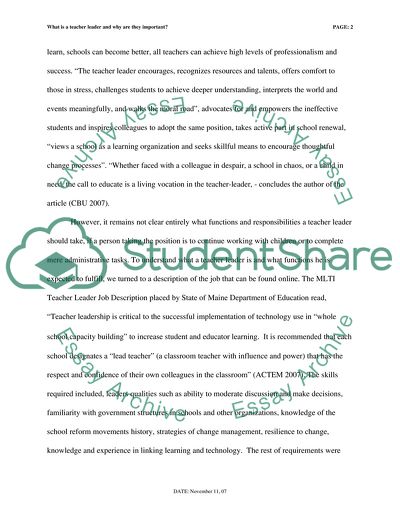Cite this document
(The Notion of a Teacher Leader Case Study Example | Topics and Well Written Essays - 2500 words, n.d.)
The Notion of a Teacher Leader Case Study Example | Topics and Well Written Essays - 2500 words. Retrieved from https://studentshare.org/human-resources/1710110-what-is-a-teacher-leader-and-why-are-they-important
The Notion of a Teacher Leader Case Study Example | Topics and Well Written Essays - 2500 words. Retrieved from https://studentshare.org/human-resources/1710110-what-is-a-teacher-leader-and-why-are-they-important
(The Notion of a Teacher Leader Case Study Example | Topics and Well Written Essays - 2500 Words)
The Notion of a Teacher Leader Case Study Example | Topics and Well Written Essays - 2500 Words. https://studentshare.org/human-resources/1710110-what-is-a-teacher-leader-and-why-are-they-important.
The Notion of a Teacher Leader Case Study Example | Topics and Well Written Essays - 2500 Words. https://studentshare.org/human-resources/1710110-what-is-a-teacher-leader-and-why-are-they-important.
“The Notion of a Teacher Leader Case Study Example | Topics and Well Written Essays - 2500 Words”. https://studentshare.org/human-resources/1710110-what-is-a-teacher-leader-and-why-are-they-important.


